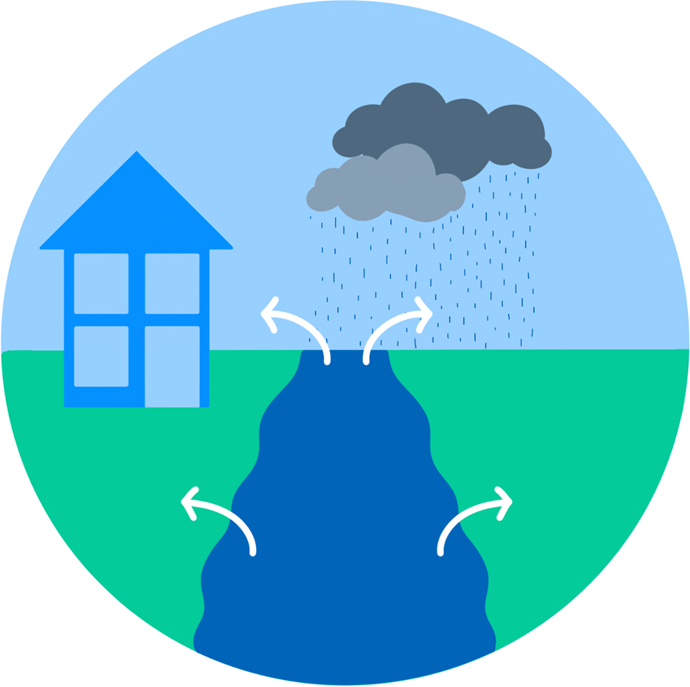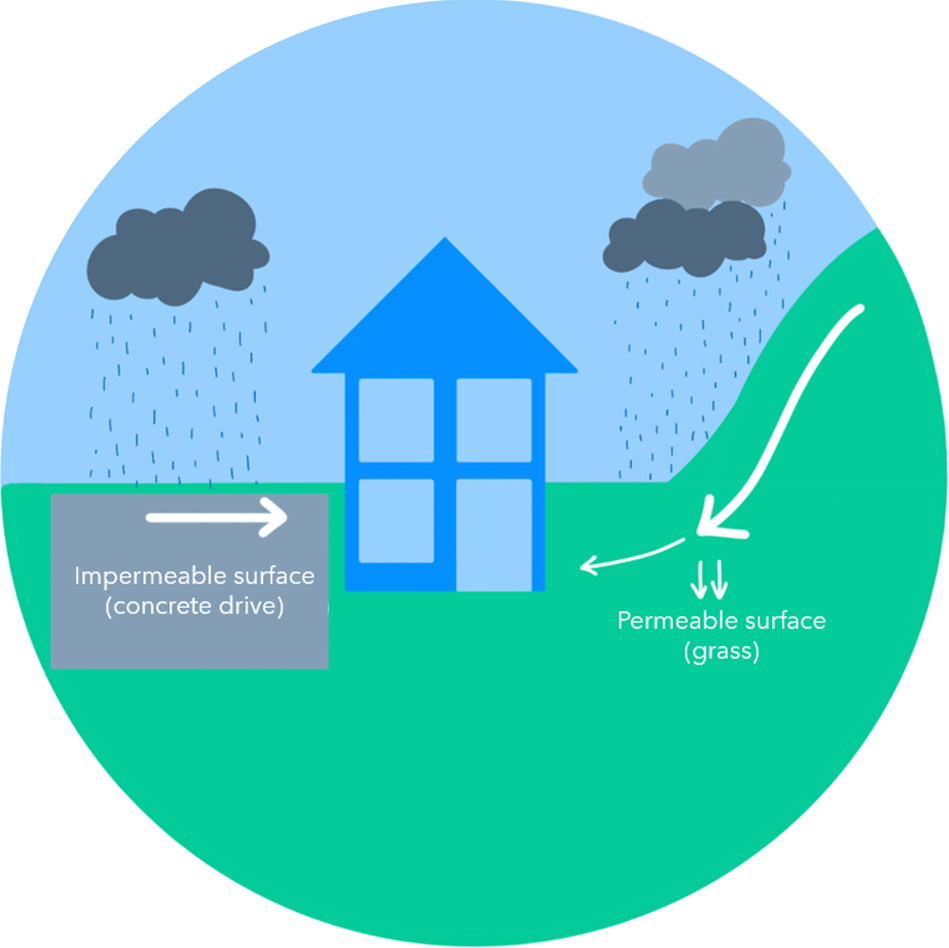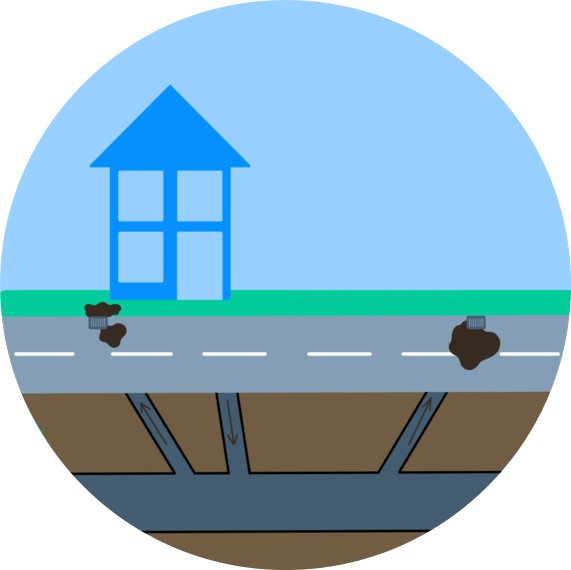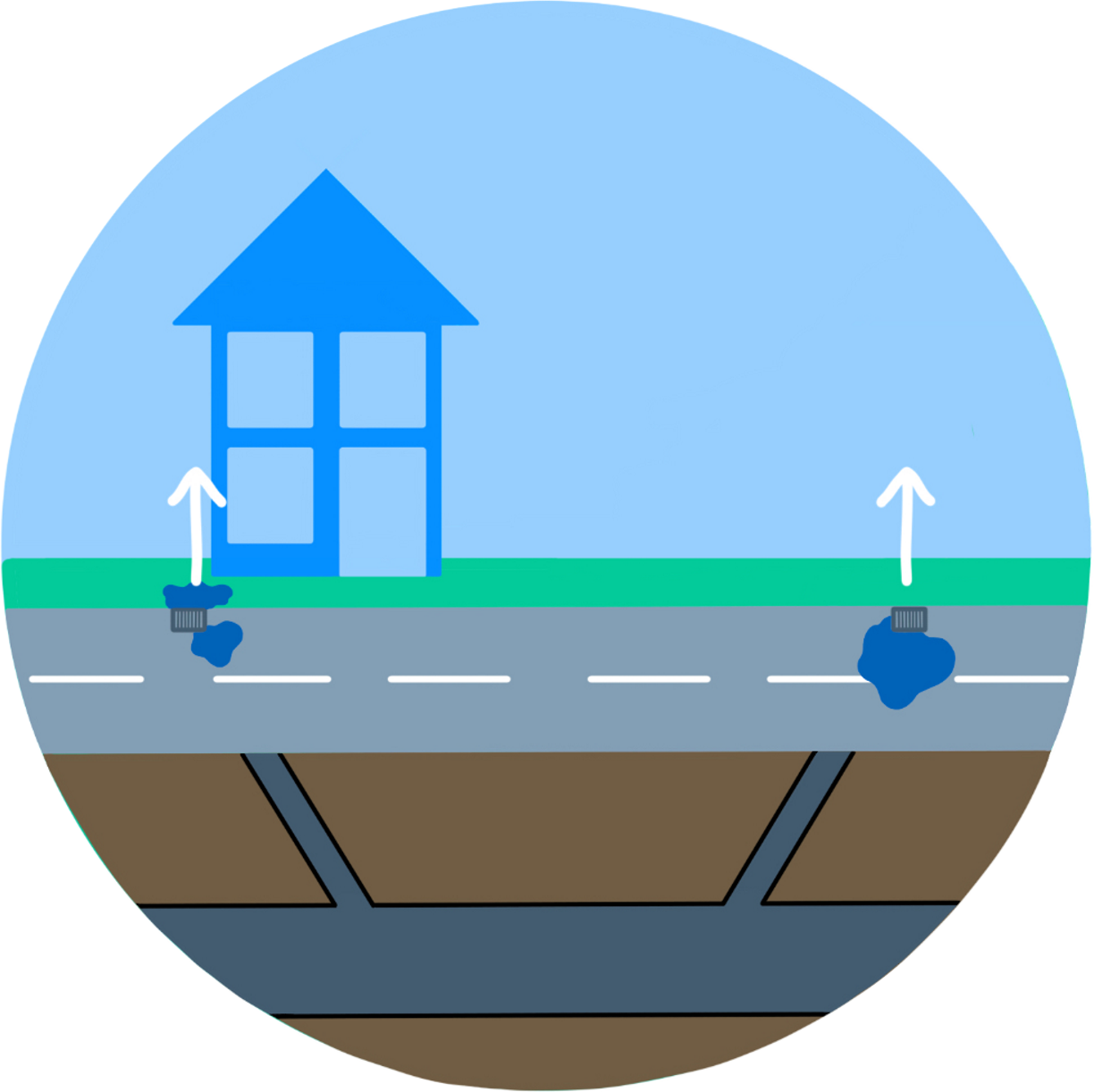River flooding, also known as fluvial or riverine flooding, occurs in main rivers and ordinary watercourses when the volume of water in the channel exceeds its capacity, causing overflow. This typically occurs following prolonged or heavy rainfall, which raises river levels due to:
- Runoff from surface water and inflow from sewer systems.
- Saturation of permeable surfaces leading to increased surface water runoff, so water reaches the river faster.
- Rapid surface water runoff from impermeable surfaces, so water reaches the river faster.
- Drainage systems conveying water to the river quickly.
- High river flows being restricted by structures, causing upstream water levels to rise.
- Accumulation of sediment and debris in the river channel, reducing its capacity.
The difference between ‘main rivers’ and ‘ordinary watercourses’:
There are two types of watercourses in flood risk management: ‘main rivers’ and ‘ordinary watercourses’. The Environment Agency are responsible for main rivers, which are usually large rivers and streams. Lead Local Flood Authorities, Internal Drainage Boards, and District or Borough Councils are responsible for other watercourses which are classified as 'ordinary’.

Surface water is rainwater which has not yet soaked into the ground or entered a watercourse, drainage system or sewer. Its behaviour is influenced by ground characteristics.
Permeable or ‘soft’ surfaces, such as gardens, allow water to soak into the ground.
Impermeable or ‘hard’ surfaces, such as roads, do not allow water to infiltrate into the ground, leading to surface water runoff.
Also known as pluvial flooding, surface water flooding often occurs after a period of prolonged or heavy rainfall that:
- Falls onto saturated permeable surfaces, so no more water can infiltrate into the ground.
- Is too intense to infiltrate into the ground
- Occurs after a prolonged warm and dry period, where permeable surfaces have become baked hard and relatively impermeable.
- Falls onto impermeable surfaces, but the drainage system is already at capacity and so no more surface water can enter the system.
- Falls onto impermeable surfaces and there is no formal management of the rainfall.

When rain falls onto impermeable surfaces, it typically enters a sewer system. There are different types of sewers:
Surface Water Sewers drain rainfall and surface water away from properties to watercourses.
Foul Water Sewers drain wastewater away from properties to be treated.
Combined Sewers drain both wastewater from properties, along with surface water runoff.
Flooding from sewer infrastructure can occur under several circumstances, most commonly when:
- Heavy and/or prolonged rainfall exceeds the capacity of the sewer network. This prevents water from entering the sewer network and may result in surface water flooding.
- A blockage or collapse of the sewer restricts or prevents water flow, causing water to back-up through the network. Water finds its way to the surface, typically through a manhole or associated drainage structure.
- High water levels in watercourses prevent surface water sewers from draining water away, causing a back-up through the system.

Highway drainage, including gullies and drainage channels, collect and drain rainfall away from roads. Rainwater can enter the drainage systems directly or be carried within the highway channel until it enters a system or watercourse.
In new developments, highways transport surface water away from properties. However, properties located at, or below, the level of the road, are at risk from flood risk if a carriage way is unable to contain the water flowing within it.
Flooding from highway infrastructure can occur under several circumstances, most commonly when there is a period of prolonged or heavy rainfall that:
- Cannot enter the highway drainage due to a blockage or build-up of surface debris, typically rubbish, leaves or other road debris.
- Overwhelms the highway drainage features by falling faster than the drain is able to capture it.
- Cannot enter the highway drainage feature due to a sewer, culvert, or watercourse being at full capacity, meaning the highway runoff has nowhere to drain to.
